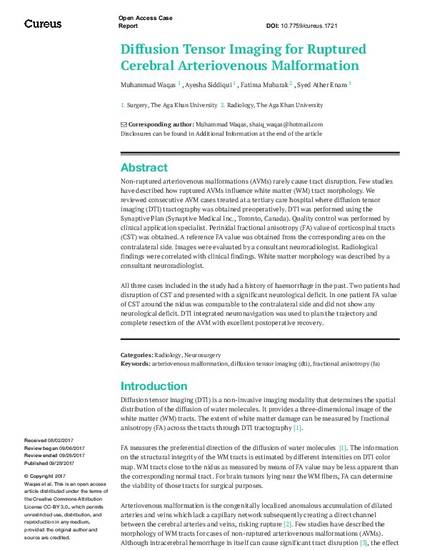
Non-ruptured arteriovenous malformations (AVMs) rarely cause tract disruption. Few studies have described how ruptured AVMs influence white matter (WM) tract morphology. We reviewed consecutive AVM cases treated at a tertiary care hospital where diffusion tensor imaging (DTI) tractography was obtained preoperatively. DTI was performed using the Synaptive Plan (Synaptive Medical Inc., Toronto, Canada). Quality control was performed by clinical application specialist. Perinidal fractional anisotropy (FA) value of corticospinal tracts (CST) was obtained. A reference FA value was obtained from the corresponding area on the contralateral side. Images were evaluated by a consultant neuroradiologist. Radiological findings were correlated with clinical findings. White matter morphology was described by a consultant neuroradiologist. All three cases included in the study had a history of haemorrhage in the past. Two patients had disruption of CST and presented with a significant neurological deficit. In one patient FA value of CST around the nidus was comparable to the contralateral side and did not show any neurological deficit. DTI integrated neuronavigation was used to plan the trajectory and complete resection of the AVM with excellent postoperative recovery.
Available at: http://works.bepress.com/ather_enam/108/

Pagination are not provided by the author/publisher